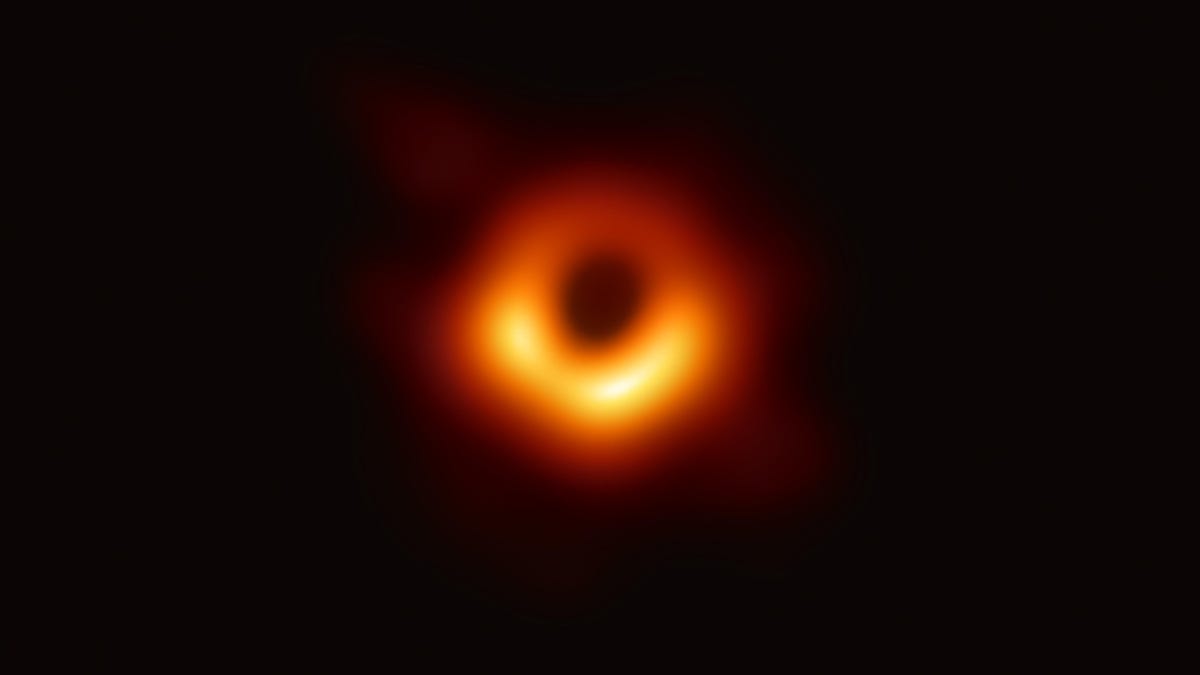The first black hole ever photographed is apparently 'wobbling'
This supermassive black hole likes to wiggle.

On April 10, 2019, Event Horizon Telescope researchers unveiled the first direct visual evidence of a supermassive black hole and its shadow. Now we know it wiggles.
In April 2019, scientists made history by revealing the first ever photo of a supermassive black hole -- something that by all accounts, should be unseeable. The Event Horizon telescope collaboration revealed what appeared to be a golden hole, situated in the heart of an elliptical galaxy called Messier 87. Naturally, the photo was quickly compared to everything from the Eye of Sauron to a blurry bagel, because the internet is the internet.
Now, new research published in The Astrophysical Journal shows that when you compile multiple frames together, you can track the black hole's movement -- and it likes to wiggle. Well, more accurately, it rotates.
"Because the flow of matter falling onto a black hole is turbulent, we can see that the ring wobbles with time," said Maciek Wielgus, the study's lead author and a radio astronomer at Harvard University.
Using archival data from the past decade -- compiled from a combination of stills from the Event Horizon telescope and mathematical models based on the April images -- astronomers have been able to get a more detailed idea of the black hole's nature, with the analysis suggesting that the orientation of the ring isn't constant.
Thomas Krichbaum, an astronomer and co-author of the study, said in a press release that the movement analysis is important because it provides a "first impression on the dynamical structure of the accretion flow, which surrounds the event horizon."
Accretion flow refers to the rate at which material is pulled within a black hole, which can impact on the black hole's appearance, rendering some parts brighter than others.
Further data is required before we can start making more concrete claims about the black hole -- and what it might mean for things like general relativity -- but for now, we can simply relish the fact that the universe has a wobbly hole spinning around within it.

